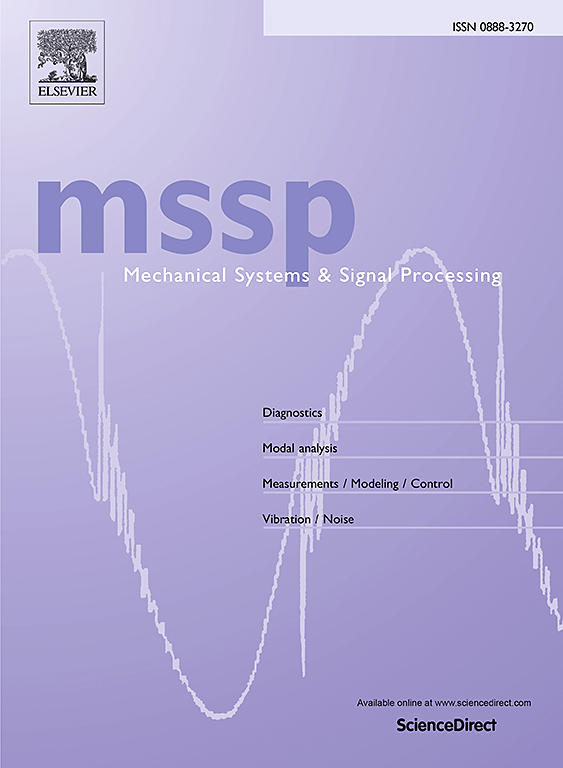Modelling and stochastic updating of nonlinear structural joints
IF 8.9
1区 工程技术
Q1 ENGINEERING, MECHANICAL
引用次数: 0
Abstract
This paper presents a novel framework for modelling and stochastic updating of nonlinear systems in structural dynamics, with particular emphasis on joint structures. The key innovation lies in the integration of experimental data, system identification, and probabilistic methods to develop a comprehensive understanding of nonlinear dynamic behaviour. The methodology employs a specialised control system to extract backbone curves, which characterise the system’s fundamental nonlinear response. A data-driven approach is implemented to identify the dominant system dynamics, which is then seamlessly integrated with the control system to create an analytical model. A significant contribution of this work is the development of a stochastic framework that combines the analytical model with measured system responses through probabilistic sampling methods, enabling robust uncertainty quantification. To address the computational challenges inherent in such complex simulations, the framework incorporates a deep learning model trained on both experimental and analytical data. This integration substantially improves computational efficiency while maintaining accuracy in predicting nonlinear dynamic responses. The framework’s effectiveness is demonstrated through application to jointed structures, where traditional deterministic approaches often fall short. By providing a probabilistic perspective on system behaviour, this methodology offers more reliable predictions of dynamic responses under varying conditions. The successful implementation of this approach represents a significant advancement in the field of structural dynamics, particularly for complex systems where uncertainty quantification is crucial for accurate response prediction.
非线性结构节点的建模与随机更新
本文提出了一种新的结构动力学非线性系统的建模和随机更新框架,特别强调了节理结构。关键的创新在于整合实验数据,系统识别和概率方法,以发展对非线性动态行为的全面理解。该方法采用专门的控制系统来提取表征系统基本非线性响应的骨干曲线。采用数据驱动的方法来识别主要的系统动态,然后将其与控制系统无缝集成以创建分析模型。这项工作的一个重要贡献是开发了一个随机框架,该框架将分析模型与通过概率抽样方法测量的系统响应相结合,从而实现了稳健的不确定性量化。为了解决这种复杂模拟中固有的计算挑战,该框架结合了一个基于实验和分析数据训练的深度学习模型。这种集成大大提高了计算效率,同时保持了预测非线性动态响应的准确性。通过对节理结构的应用证明了该框架的有效性,而传统的确定性方法在节理结构中往往达不到要求。通过提供系统行为的概率观点,该方法提供了在不同条件下动态响应的更可靠的预测。该方法的成功实施代表了结构动力学领域的重大进步,特别是对于不确定性量化对准确响应预测至关重要的复杂系统。
本文章由计算机程序翻译,如有差异,请以英文原文为准。
求助全文
约1分钟内获得全文
求助全文
来源期刊

Mechanical Systems and Signal Processing
工程技术-工程:机械
CiteScore
14.80
自引率
13.10%
发文量
1183
审稿时长
5.4 months
期刊介绍:
Journal Name: Mechanical Systems and Signal Processing (MSSP)
Interdisciplinary Focus:
Mechanical, Aerospace, and Civil Engineering
Purpose:Reporting scientific advancements of the highest quality
Arising from new techniques in sensing, instrumentation, signal processing, modelling, and control of dynamic systems
 求助内容:
求助内容: 应助结果提醒方式:
应助结果提醒方式:


